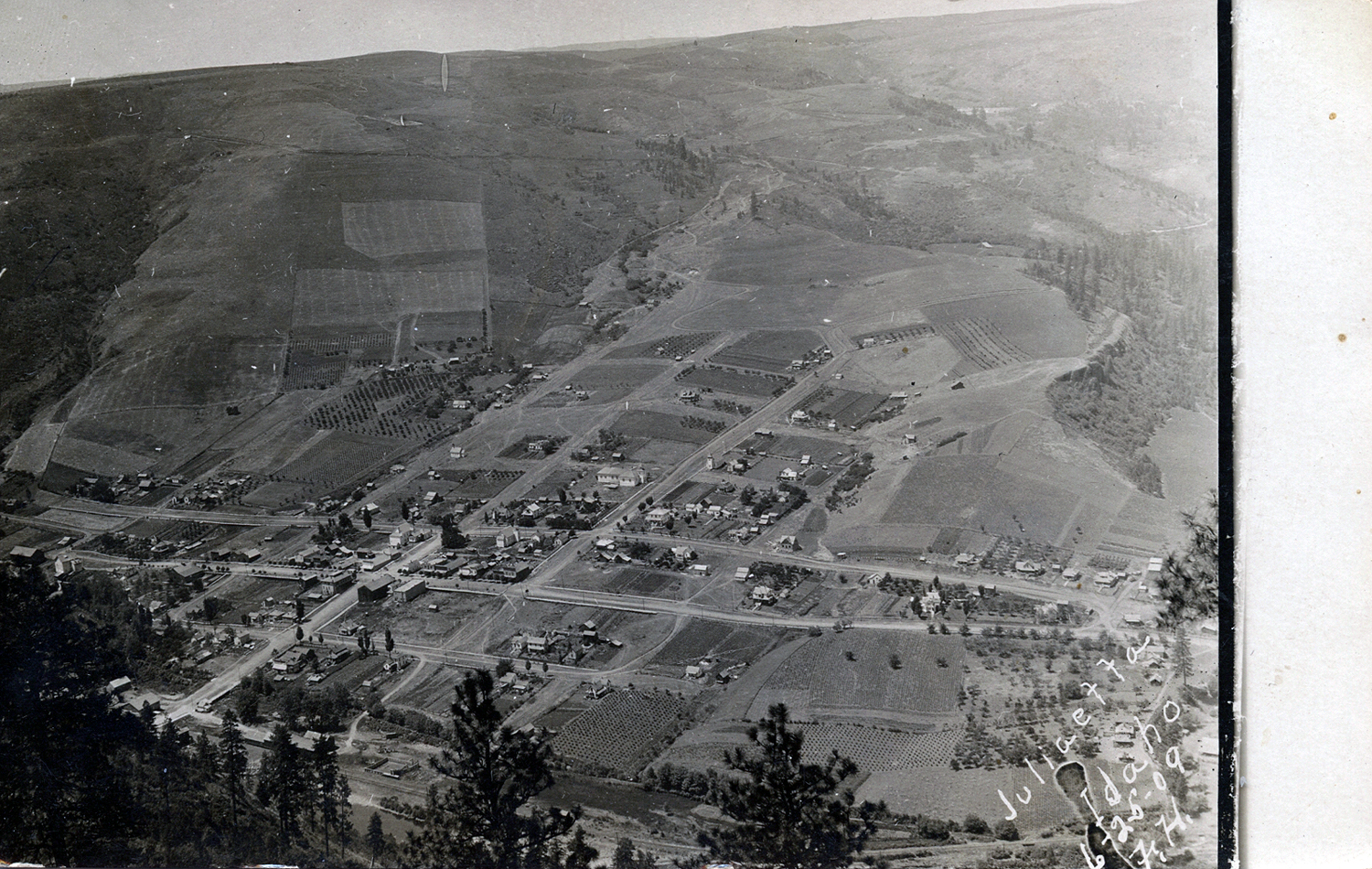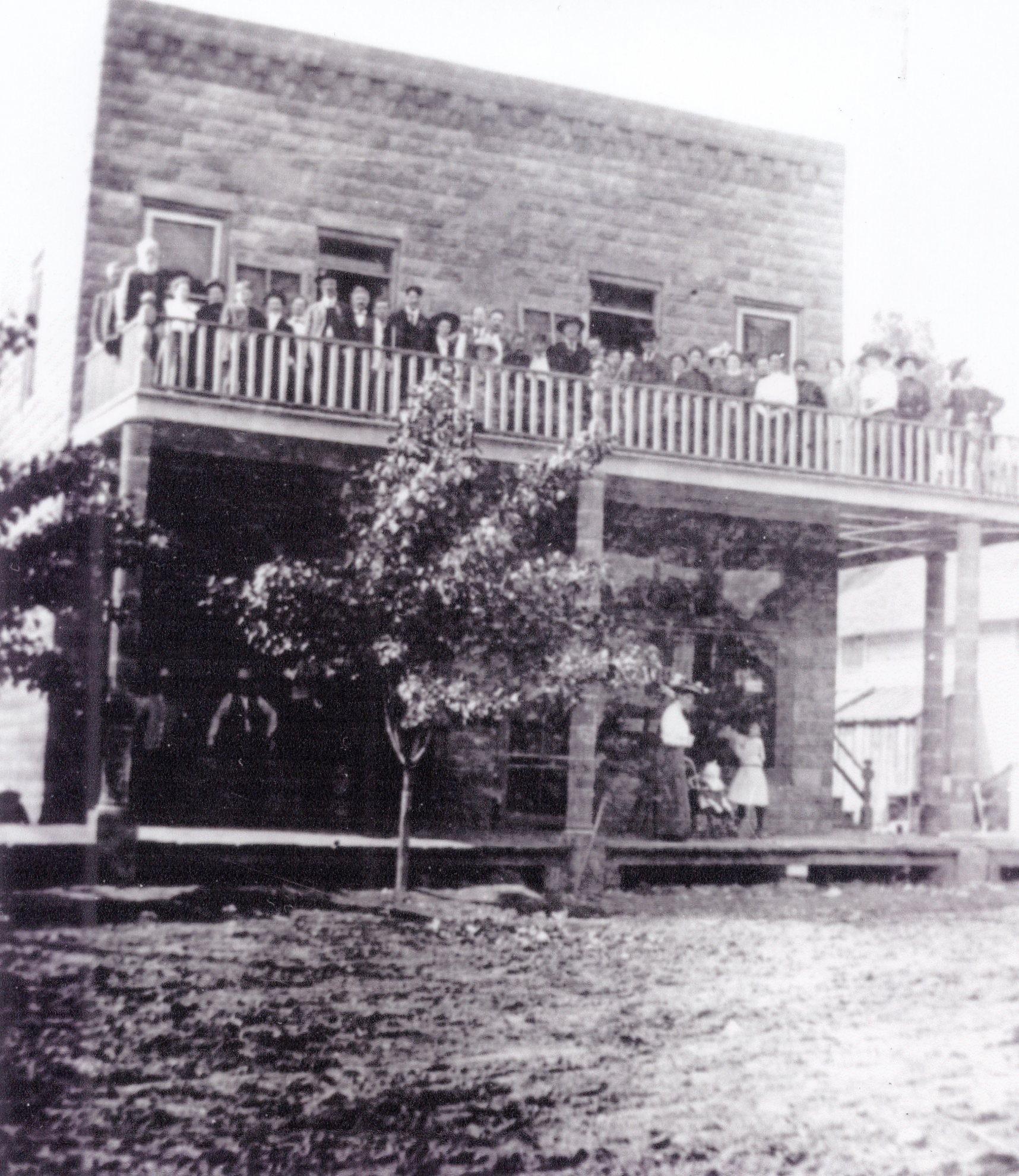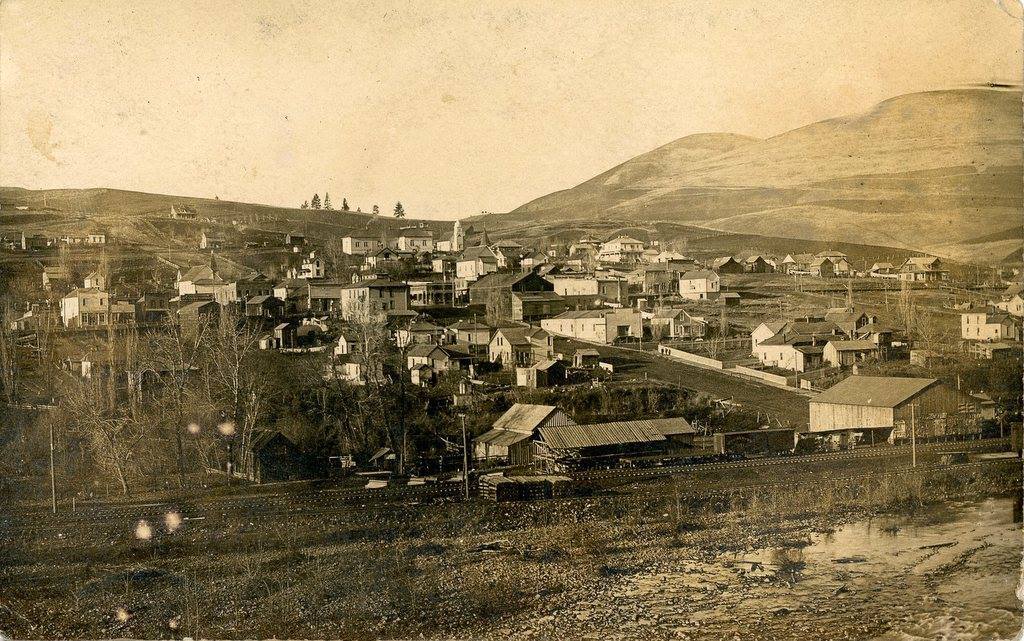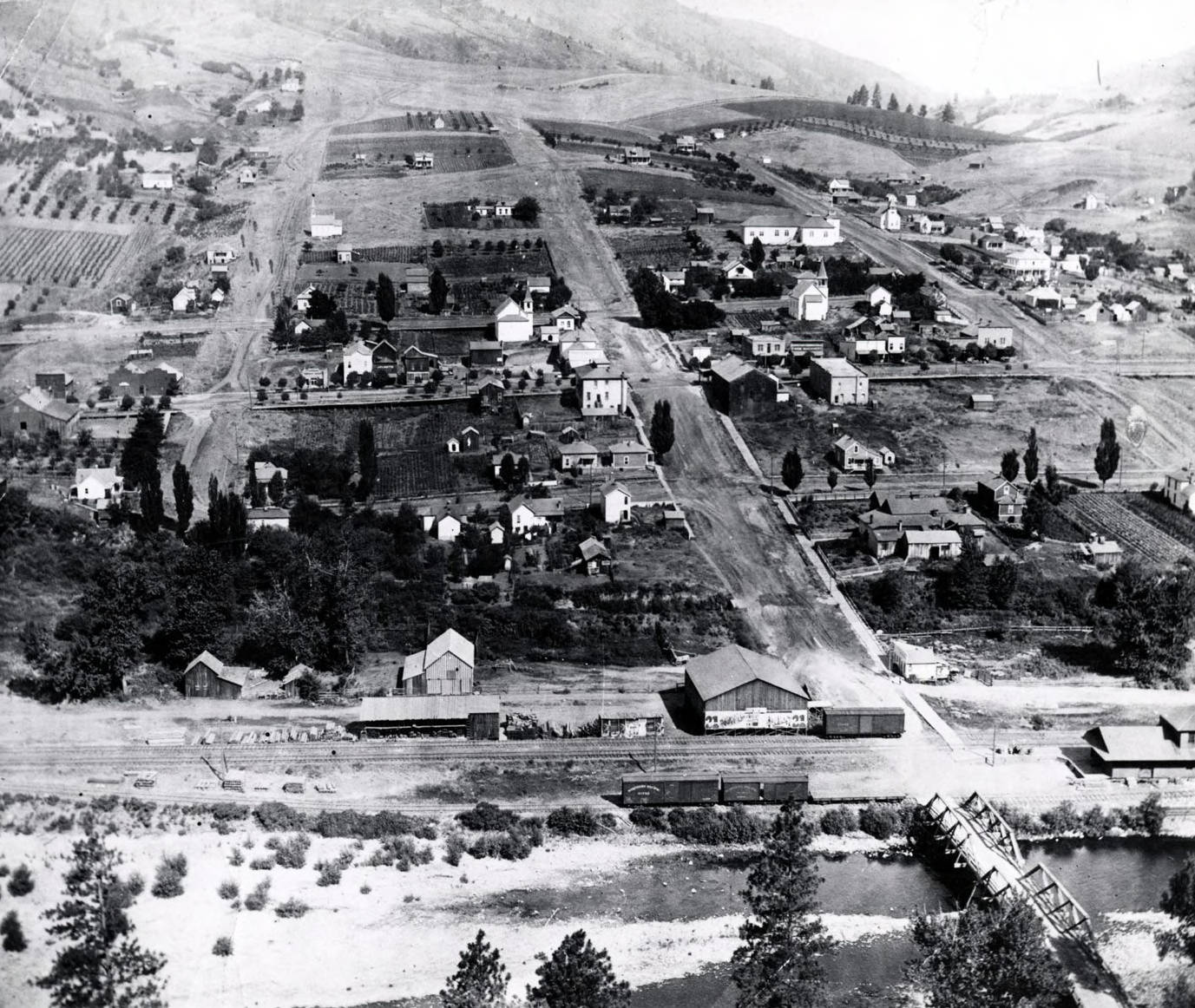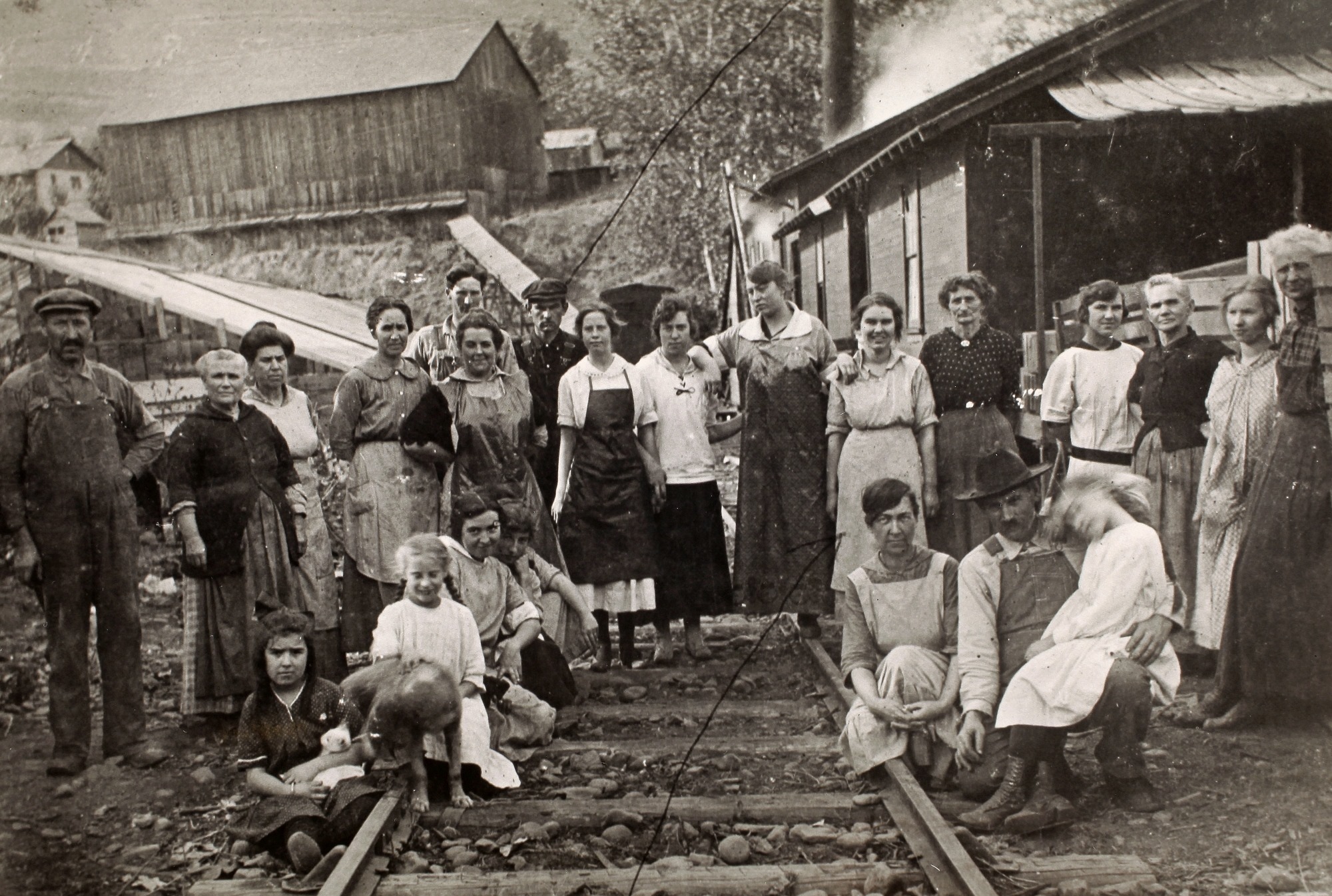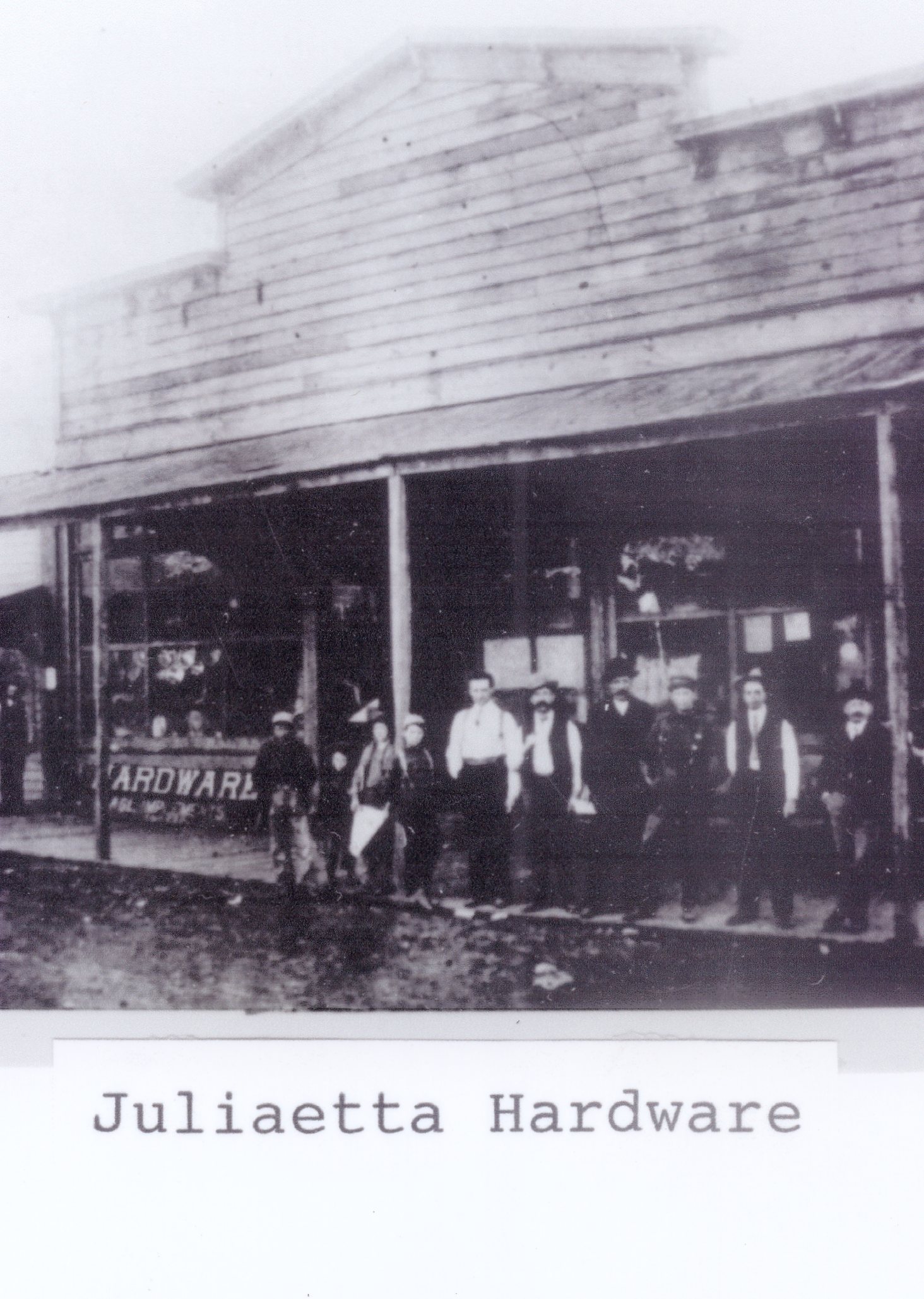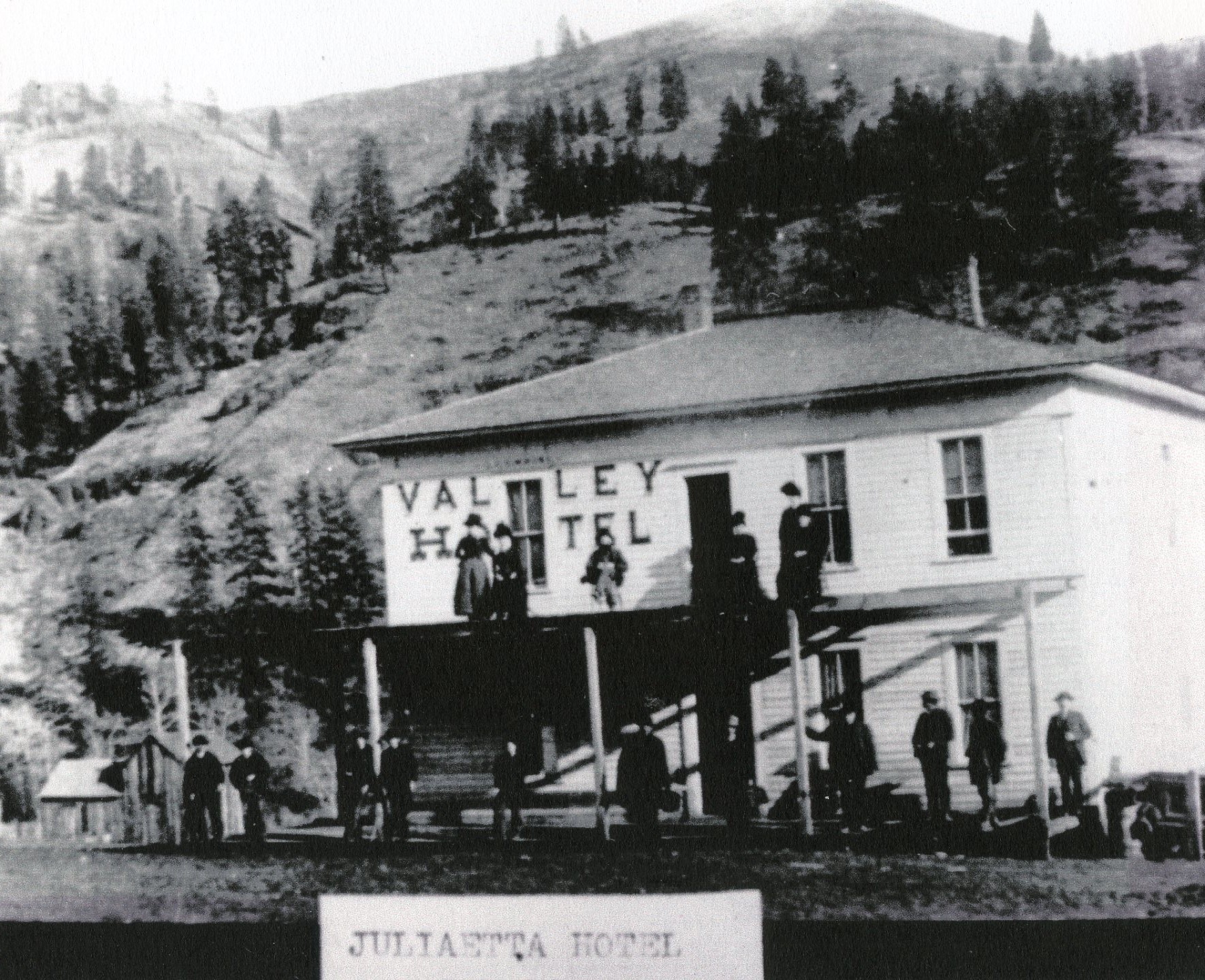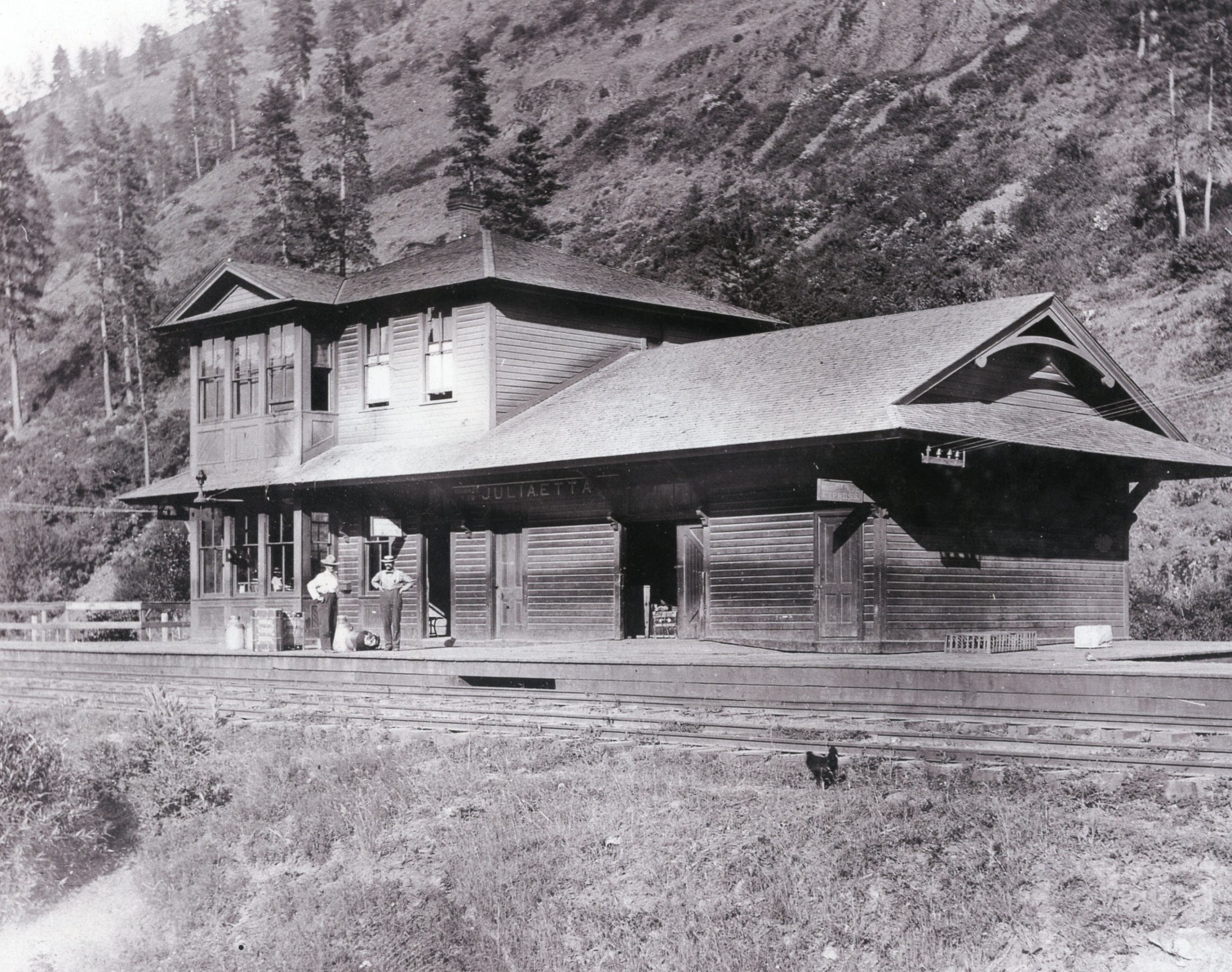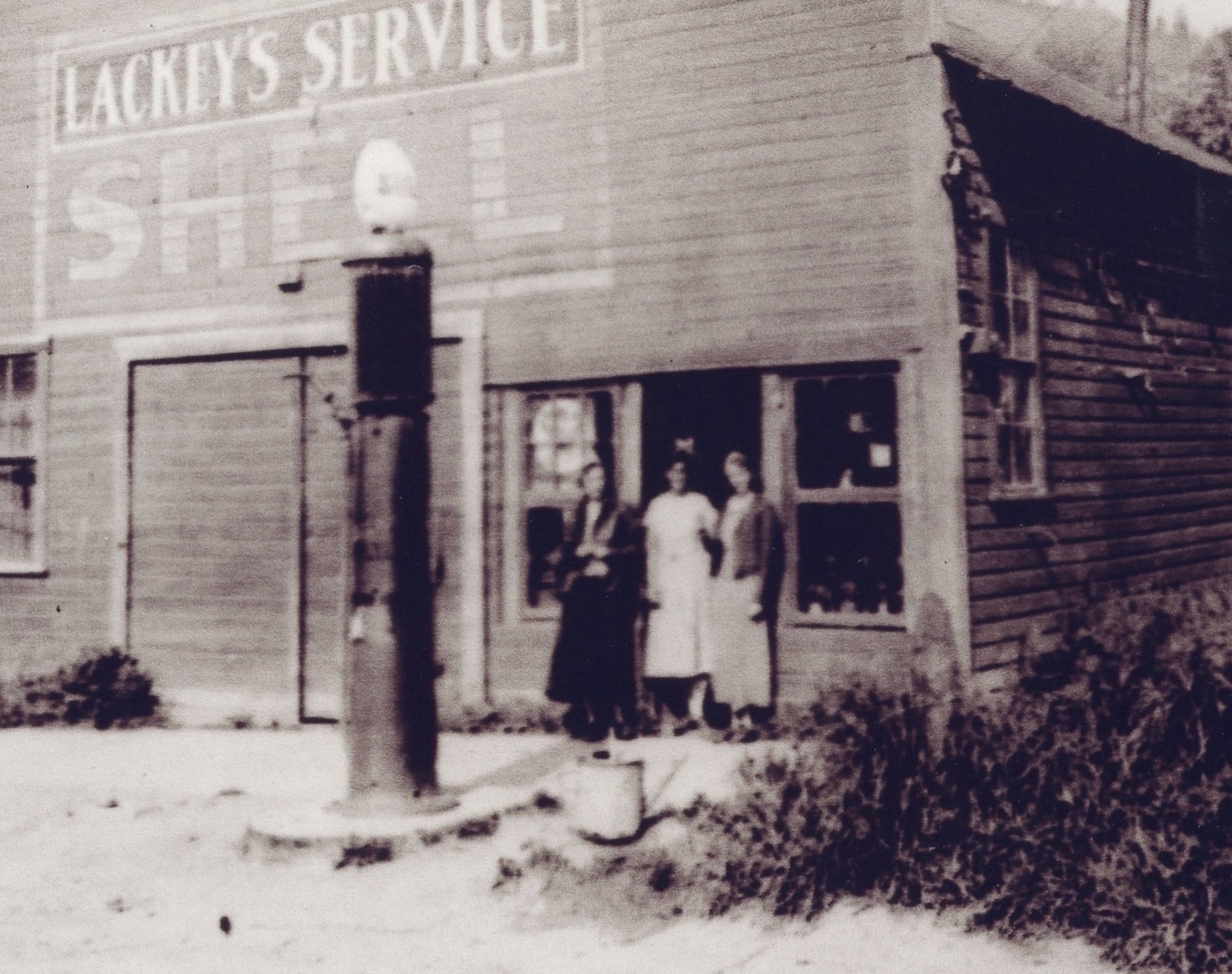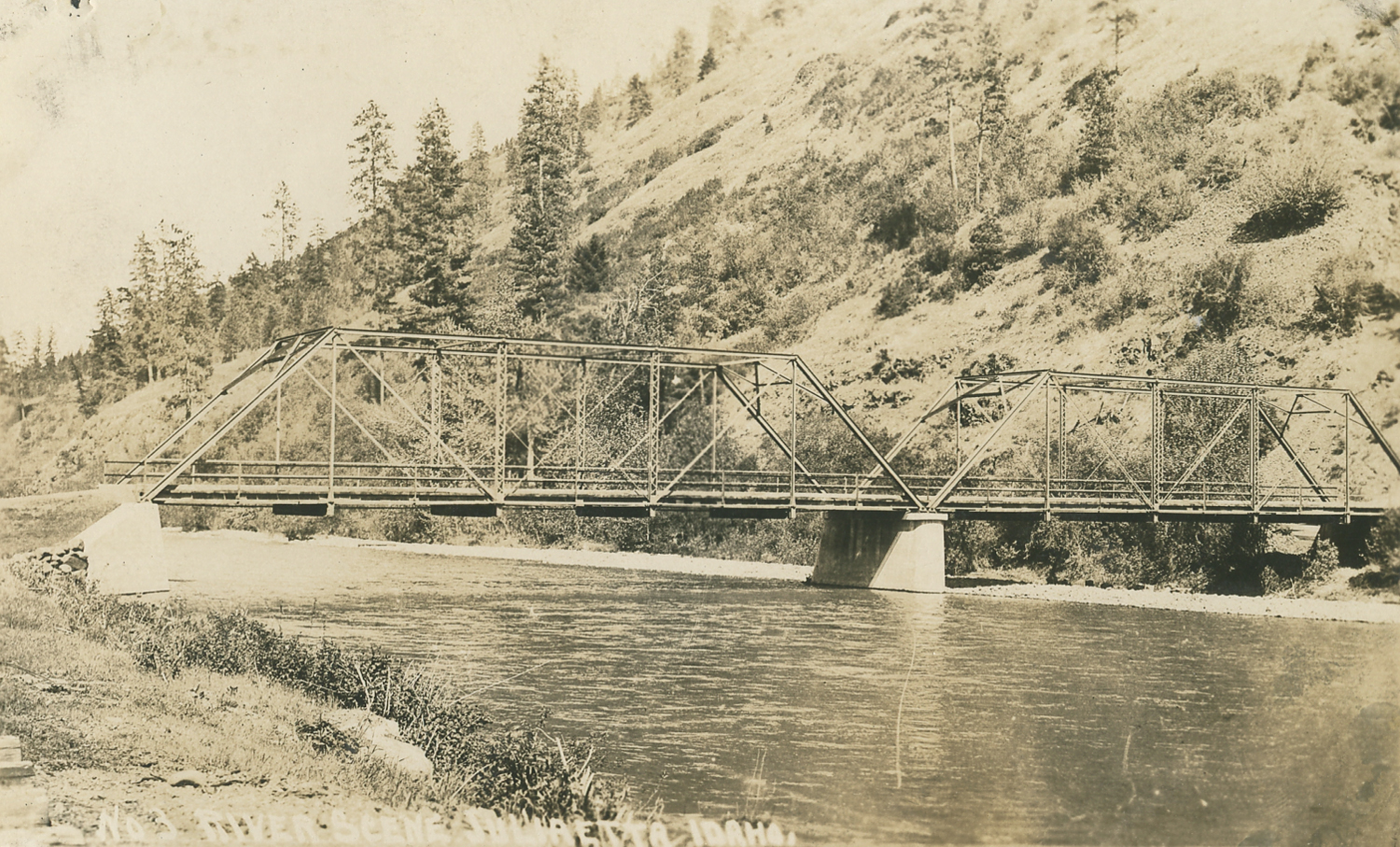For more information, please visit the Juliaetta – Kendrick Heritage Foundation website.
The first people to inhabit this fertile valley were the Nez Perce tribes, who used this area as winter camping grounds. In fact, some claim it was a burial ground. Once Juliaetta became settled, the Indians were commonplace and usually friendly. However that was not always the case. Early settlers found themselves at times having to protect their cattle, homes, and lives with violence. The earliest settler on Fix Ridge, Eleazor Fix, discovered an Indian on his land that had broken his leg and was unable to travel. He took him home and his wife nursed him back to health. That Nez Perce man returned later to caution the Fix family of an impending raid and danger to his family to give them time to escape.
The valley’s spring growth provided abundant camas root that the tribe used as food. Game was plentiful. The Nez Perce thrived in this valley using it as a spring camp. Many arrowheads and Indian artifacts have since been found by Juliaetta residents.
Juliaetta was first known as Schupfer and later as Schupferville, in honor of Rupert Schupfer who homesteaded the land in 1878. He plotted one-half of his homestead as a town site. S. R. Southwick, an early homesteader at Southwick, was the surveyor. Schupfer operated the first general store. Homesteaders found the valley and its ridges fertile and productive providing abundant harvests of fruits, vegetables, and crops. By 1878, the town boasted a population of 200.
In 1876, another civic leader settled on American Ridge. Charles Snyder saw the need for a Post Office. He acquired land next to Schupfer and names the property Pleasant Home. He established a Post Office and named it for his town daughters, Julia and Etta. Snyder became Juliaetta’s first Postmaster in 1882. Snyder also carried a stock of merchandise in the same building as his Post Office. Mail was brought by horseback twice a week from Genesee, a sixteen-mile trip each way.
Noyes B. Holbrook & Lavett established his flour mill in 1885. It was constructed by “Three-Fingers” Charley Miller. The millrace, which was built by Chinese laborers, was 6-7 feet wide and 5 inches deep. When the gates opened to power the mill, local people would gather to scoop up the fish that were trapped. The stream powering the mill ran the full length of the town. Juliaetta’s flour was labeled “Pride of the Potlatch” and was shipped all over the west coast of the United States. Later this business site became Juliaetta Milling and Light Company. Electricity was installed in 1903. Johnson and Armstroung owned the mill during its productive years and was sold to C. H. Martin prior to a fire destroying it in 1920.
1889 saw the first bank established in Juliaetta, as well as the first newspaper, The Gem, which was operated by W. L. Taylor. The town has a jewelry store, Weber Harness & Saddlery, and Durnham & Kaufman’s General Store (later known as Niles & Needham).
The town was beginning to grown and would soon blossom into a prospering community. As homesteaders and pioneers came to the surrounding ridges and settled, farms sprang up and became very productive. Early publications called the Juliaetta farmland “Paradise of the American Farmer.” The dry land farming and gazing lands gave each farm a means of self-sustenance. Farmers raised wheat, flax, oats, and hay in addition to fruit trees and large gardens to feed their families and to eventually supply a seasonal cannery.
Juliaetta was dedicated on June 14, 1890. The next year Lawrence and Porter constructed the tramway connecting Potlatch Ridge to Juliaetta at a cost of $25,000.00 just in time for the arrival of the Northern Pacific Railway Company in 1891.
This tram design used rail cars which ran on a single track from the upper building at the Zumhofe farm on Potlatch Ridge to a lower warehouse along side the railroad. Grain, produce and lumber were mainly transported. A steam engine provided power with a double track section near the botton, constructed for passing. The tramway boasted the first telephones, one at the top and one at the bottom. In 1916 the tram was dismantled.
The fledgling town became incorporated on April 19, 1892. Juliaetta was flourishing with many tons of agricultural products being shipped and diverse services being offered by enterprising individuals. Rose Deeston opened Juliaetta’s first saloon, which was located near the depot that year.
The financial panic of 1893 hit with a vengeance. However, within two short years, Juliaetta was again thriving. Several newspapers were published in Juliaetta until the early 1900’s, but all were short lived: The Potlatch, Juliaetta Advance, Potlatch Press, The Register, and the Juliaetta Enterprise, the Potlatch Herald, Juliaetta Sun, and The Independent. The Flood of 1900, caused by a train crash in Kendrick, caused damage and rebuilding to occur in Juliaetta.
By 1902 Juliaetta has a full business district including two hotels, The Grand Central Hotel and the Palace Hotel. Dr. Robert Foster Sr. had established in 1903 his Foster’s School of Healing. He had put Juliaetta on the map with his claim to cure skin cancer. Folks came from all over the work to be cured of every known disease. Business was booming and Juliaetta was thriving again.
The Juliaetta Cannery opened for business in 1911. Mr. and Mrs. William Mahon were owners. During the busy season they employed 100 people turning out up to 10,000 cans/day. It was a seasonal business usually starting in June with the cherry crop and moving on to vegetables and fruits as they ripened ending in the fall with apples. Juliaetta Cherry Growers shipped 25-30 carloads of cherries in 1929 by rail. The tomato crop provided the largest cannery yield. It became famous for its cans of Juliaetta Tomatoes. The cannery burned in November, 1919. Many people said it was arson to collect the insurance for a failing business.
Niles and Needham operated a mercantile store in 1911. They carried over $20,000.00 in inventory in the brick building pictured below. It used to be located in the left side lot to the current Colter’s Creek Winery building. Robinson’s Tonsorial Parlor also shared the brick building’s space. Apartments were situated on the ground floor with space also used by a barber, shoeshine service and a masseur.
By 1911 Joseph Groseclose & David Richardson owned a general store and provided undertaing servies. Laura (Mrs. Joseph) Groseclose owned Juliaetta Millinery Store. She planted the trees in the Juliaetta Park.
Bun Penland was a local builder and responsible for construction of many Juliaetta structures. You could get refreshments at Stump’s Confectionery owned by Willian H. Stump. His wife was a dressmaker. Juliaetta was thriving with a population of 600. W. W. Poyfair owned the Poyfair Building at 3rd & Water St. which held a skating rink and dance hall. This same year Dr. Foster moved to Clarkston. Dr. Foster had a direct impact on Juliaetta’s booming economy during the approximate 10 year he called it home.
All was not work and business in Juliaetta. Mrs. R. H. Porter in 1904 established the Porter School of Art. The Juliaetta Opera House opened its doors in 1912. The next year Mrs. Mary Perryman opened her Empire Theater Company. They performed four nights each week. The town was proud of their 18 piece concert band and extremely competitive with its baseball club.
Juliaetta’s Commercial Club was active. In 1915 E. W. Porter spearheaded purchasing the Johnson Grove for use as a public park (now the Stella-Jones Pole Yard.) This was used as a baseball field. Later it would be the site of a sawmill started in 1946 by E. A. Kirkpatrick. Managers were Raymond Howard and Hap Meyer. Later the business was owned by Jack Mead and Ray Howard and known as Mead & Howard Lumber Company. It was sold in the 1960’s to M. G. Hitchcock and became Gem State Lumber Company.
Moving pictures were first shown at Shabley Hall (currently Community Church). The film was run by hand and caught in a laundry basket. In 1916 Mr. Hickenbottom named the site the Silver Belt Theatre. Carl Porter and Otto Schupfer took over the business in 1924 and it became known as “Otto & Carl.”
In 1917, tennis courts were erected where the City Park now stands, next to the Colter’s Creek Winery Building.
As with all small towns of this era, fraternal lodges thrived. Juliaetta had the following lodges: Masons, Odd Fellows, Rebekas, Knights of Pythias, Woodsmen of the World, and Star of Bethlehem.
…We wecome you to enjoy and learn from Juliaetta’s rich history. The community spirit continues!”
–From 2014 Juliaetta Historical Tour Booklet, compiled and written by Juliaetta-Kendrick Heritage Foundation



